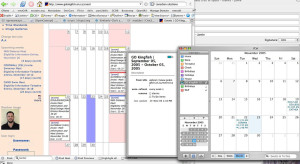Periodisation in basketball at its simplest is about planning. It is planning with the purpose to give your team the best possible opportunity to do well. Periodisation when it is mapped correctly and implemented well is a fantastic part of a successful program. The flip side to this results in players being prone to injury, additional stress, and creates an increased chance for negative conflict within the team.
It is important to note that the periodisation for a junior team is completely different to that of a professional team. This seems obvious at first glance but is worth mentioning none the less. The focus of the information here will be set as an introduction.

Phases of Training
The first significant part of your planning will involve you looking at the three different phases for your team over the year. The three phases of training include:
- Pre-Season or Preparation Phase
- Competition Phase
- Post Season or Transition Phase
Pre-Season or Preparation Phase can be described as foundation building for the season on which to be based. In this phase you are building your team up to the challenges of the regular season training demands. These preparations will focus around all elements of a training program such as technical, tactical, physiological (strength and conditioning) and psychological. Your tactical elements early within this phase will be limited, while athletes develop their physiological endurance.
The competition phase will start just before the season your team is to compete within. During this phase your team is highly active looking to peak towards the pivotal points of your season. For instance you want your team to be in peak physical fitness towards the post season rather than peaking at the start of the season only to have the team’s intensity burn out when everything is on the line.
The Post Season or Transition Phase is the period of time immediately after the season (regular and post) has finished. During this period of time athletes can be involved in activities such as injury recovery and individualised training plans to address any possible issues. For senior athletes this time is usually spent developing new technical or individual skills. However for junior athletes they may undertake an alternative sport or activity during this period in time. For example playing in different sports depending on if it is a winter or summer season.
Training Sub-phases
Drilling down further there are a number of sub-phases which can be utilised to help with the detail to be added to your team’s periodisation. The Pre-Season or Preparation Phase can be broken into two sub-phases called the general and specific. These sub-phases help define the types of activities, intensity and range of activities to be completed. In the general sub-phase as mentioned previously athletes are being worked into a position of readiness to be able to start more purposeful and focused training. Examples of activities would include individual skill development and conditioning training.
In the specific sub-phases the training continues to increase in intensity with a lot more sports specific drills. In this stage technical (individual), tactical (team), physiological and psychological elements of a complete training planning are put into play. Intensity during this phase will not be high but low to moderate as capacity for training continues to be developed.
During the completion Phase of the planning there are two sub-phases which can be of assistance in defining the activities within this period of time. The first is the pre-competition sub-phase. This refers to the period of time immediately before the season and including the first couple of rounds of the season. As a suggestion this time would be between four to five weeks prior to the start of the season and one or two rounds within the season. During this sub-phases trainings intensity reaches a new level to try and simulate the requirements of the season. Tactical focuses become more prevalent with training s sessions and conditioning becomes more demanding.
The second sub-phase is also title competition. This is the period of time expressed as the regular and post season. During this sub-phase the team should be mapping the times at which they would like to peak their performance and then work to reach these points of high performance and then return to maintenance of technical, tactical, physiological and psychological elements.
The Post Season or Transition Phase is not normally broken into sub-phases.
Macrocycles are the next level of detail to be explored within your planning. Macrocycles are dependent on the different landmarks or milestones within your sporting season. As a starting macrocycles are normally between three to eight weeks in length. In many programs the macrocycles are aligned with months during the programs planning.
Microcycles
The final level of detail to be added to a periodization plan is the Microcycles. Microcycles are usually weekly in length and again serve the purpose of providing detail to the overall plan. In these stages the strength lies in the coach’s knowledge about the topic they are training for. By planning out content and target areas coaches are able to better manage the overall depth of the program and what it has to offer to athletes.
Volume and Intensity
Periodisation has two overall core points which can be used within any of the phases or cycles with great affect. These are Volume and Intensity. Volume and Intensity help increase the demands upon athletes and how difficult sessions can be to complete. By increasing the volume the number of repetitions can be increased and therefore athletes have any opportunity to refine their abilities. Intensity is the pace at which these tasks are performed. Depending on the needs of the program both needed to consider as to if the coach wants quality or quantity from the training session.
If you would like some assistance with your team or programs planning and periodisation contact us at Functional Basketball Coaching today to see how we can help!

